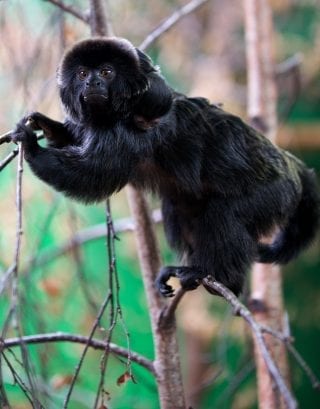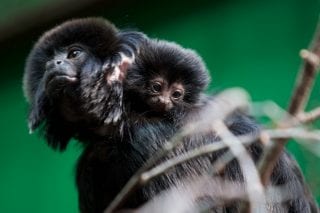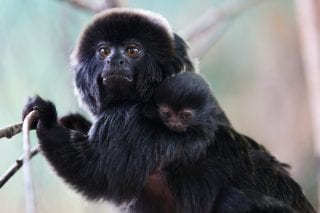Fun facts
Caregiving
For the first 2-3 weeks of an infant’s life, the mother carries them and is the primary caregiver. After this, the father and other members of the group can help carry the infants too.
Communcation
Goeldi’s monkeys communicate using scent, facial and body language and vocalisations. They can make up to 40 different vocalisations, which vary depending on the situation and include both long and short distance calls. The long distance calls help them maintain contact with other members of their group even from a distance.



